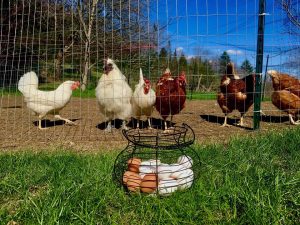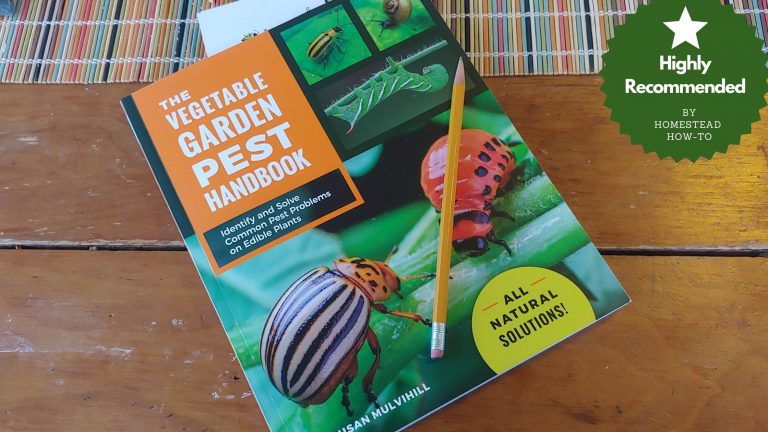This post may contain affiliate links.
Subtitle: Why Your Chickens Do What They Do & Say What They Say
I consider chickens the gateway to having animals on your homestead. Once you’ve got the basics (shelter, food, water, and a place to forage), they are surprisingly low-maintenance. One of the best surprises is opening the nesting box door to your first fresh egg laid by your chicken!
If you’ve never had chickens, you may not realize that they are incredibly quirky animals—each one seems to have its own personality.
But if you have, you’ve probably felt like each one was a member of the family, and you’ve probably spent time chatting with them regularly. Perhaps you’ve even wondered if they had their form of communication. If so, this review is for you.
Chicken-Speak
As an educator who studies student behavior on a daily basis, along with my background in psychology, I found the idea of learning more about the why of chicken behavior extremely interesting. So, I was incredibly excited when I heard Storey Publishing was sending me a copy of Melissa Caughey’s book How to Speak Chicken.
The book cover was enough to intrigue me, but I’m also one of those who thumb through books to scan the content. Caughey includes beautiful pictures of chickens throughout the book–I’m a sucker for a pretty chicken or a handsome rooster, so I was immediately enthralled!
In her book, Caughey reflects upon hours and hours of watching her chickens interact with her and each other. Her sociology, anthropology, psychology, and biology background gives her fascinating insight into chicken interactions and behavior.
Caughey spent so much time observing her flock that they accepted her into the flock. She could converse with them, recognizing that different “clucks” mean different things.
Why Chickens Do What They Do
Caughey writes the book chronologically of a chicken’s life, beginning with chick speak. I found the section on “brooder language” fascinating.
While I knew the different sounds meant something, Caughey breaks down the sounds into what they mean, not just a bunch of cute little peeps. She breaks up the sections with either stories of her own chickens or interviews with other chicken keepers.
The behavior aspect of the book was also a favorite. Caughey has a section titled “How to Behave in the Henhouse” that discusses the etiquette rules chickens have for their flock. This section answered SO many questions I had about my flocks. The pecking order and different roles within a flock gave me insight into who does what in my flock.
For those who love learning about the biology of different animals and the brain science behind their behavior–there’s also a section on that! Caughey gives great detail into how unique chickens truly are.
The section on sleep was my favorite part of this chapter. Did you know chickens experience periods of rapid eye movement (REM) sleep? This means that chickens have the capability of dreaming–MIND BLOWN!

Is this book for you?
If you own chickens and are interested in why they act the way they do, I highly recommend you read this book. It is an easy read (142 pages) and switches between factual and narrative writing.
I appreciated how Caughey broke up the “science” parts with personal accounts from her own life. There were many aspects of my flocks that I had been wondering about, such as flock size, sleep, and the whole pecking order situation. Caughey writes in a way that is easy to understand and relates to your chickens.
After reading this book, I appreciate my flock even more and will make more time to hang out in their presence (when it isn’t 38* and pitch dark!).
For more of our recommended homesteader books, check out our book list in our Amazon Storefront.






